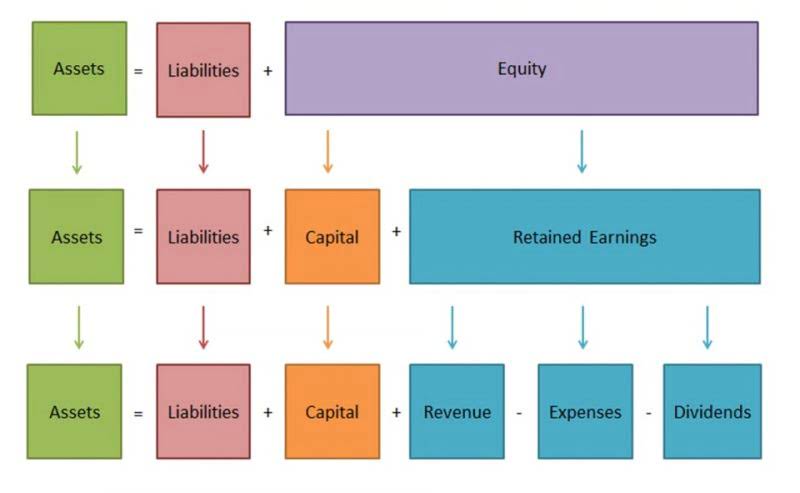Banks must prove they can identify, measure, and control risks before they cause harm. APRA was formed in 1998 following major reforms to Australia’s financial regulatory system. These reforms recognised the need for a dedicated agency to supervise the financial health of institutions.
What is Data Governance? Key Principles and Best Practices
- These transactions are recorded in the respective books of accounts of the companies involved.
- The subsidiary sold some items to customers, and kept the remaining unsold items in its inventory.
- Without proper reconciliation, the parent company’s balance sheet could incorrectly reflect both amounts, distorting the group’s actual financial position.
- This process is crucial for maintaining financial accuracy, regulatory compliance, and transparency across the organization.
- Managing this volume manually becomes overwhelming, leading to delays and potential errors.
A journal entry for intercompany accounting records transactions between affiliated entities within a corporate group. These entries ensure that financial exchanges such as sales, loans, or cost allocations are accurately reflected across the entities, facilitating proper reconciliation and financial reporting. For instance, a small business owner with multiple stores, each operating as a separate entity. Would benefit from applying intercompany accounting as it ensures accurate financial consolidation. This process ensures that internal transactions, such as transfers of goods, services, or funds between subsidiaries, are recorded properly.

Top 10 automation challenges for CFOs

Standardized currency management systems ensure accurate conversions across entities, minimizing foreign exchange discrepancies during intercompany reconciliation. Define standard processes, guidelines, or templates for recording, invoicing, and eliminating transactions as well as handling currency conversions across all your subsidiaries. Uniform intercompany reconciliation policies help avoid ambiguity or confusion around workflows, enhancing consistency. Consolidating all your intercompany transaction data in one place facilitates consistent transaction recording and real-time data sharing. This real-time visibility into intercompany balances prevents delays caused by incomplete data or batch processing. Most intercompany reconciliation issues don’t come from big mistakes; they come from things not lining up.
Identify Key Performance Indicators (KPIs)
This process is essential for maintaining accurate financial records and ensuring the integrity of financial reporting. Intercompany reconciliations are necessary so that the consolidated financial position and financial status of the group, including parent and subsidiary, is properly known. Intercompany reconciliation is essential for CFOs and financial teams managing multi-entity businesses. Without an efficient process, financial statements become inaccurate, leading to compliance risks, discrepancies in reporting, and potential regulatory penalties. Smaller QuickBooks ProAdvisor multi-entity companies can theoretically get away with manually performing intercompany reconciliations in spreadsheets. However, larger corporations that deal with thousands or even millions of intercompany transactions execute the reconciliation process daily and therefore have to invest in automation software.
Streamline your intercompany reporting and reconciliation process with our reliable and intuitive software solutions.
Modern finance teams increasingly rely on automation solutions to streamline these steps and reduce the risk of errors. To make this process easier for yourself, use the same identification and data entry standards for all journal entries involved in intercompany transactions. Ideally, all entities within the parent company use consistent data entry standards, though, at the very least, the journal entries for intercompany transactions should be consistent. Some ERP systems, like SAP, have built-in functionalities for intercompany tasks, and many specialized Enterprise Performance Management (EPM) software platforms also provide robust reconciliation tools. When https://www.bookstime.com/ you’re looking at different solutions, be sure to ask detailed questions about their integration capabilities.
- Intercompany reconciliations are necessary so that the consolidated financial position and financial status of the group, including parent and subsidiary, is properly known.
- Clearly communicate why this change is happening and highlight the benefits, like the potential to significantly reduce financial statement errors and achieve faster, more accurate financial closes.
- APRA was formed in 1998 following major reforms to Australia’s financial regulatory system.
- Intercompany reconciliation is the process of matching and resolving transactions between entities within the same organization to ensure accurate financial records.
Organizations can develop a centralized intercompany reconciliation policy. This policy can outline the procedures for recording, reconciling, and reporting transactions. Establishing standardized reconciliation procedures across the organization helps ensure consistency and accuracy.
- Downstream transactions occur when the parent company transfers assets or services to its subsidiaries.
- When subsidiaries share software licenses, intellectual property, or royalties, you must reconcile internal charges between them for revenue recognition and expense allocation.
- The term describes the process by which a business takes steps throughout the enterprise to ensure the uniformity, accuracy, and consistency of all its data.
- Implement a centralized platform for recording, tracking, and reconciling intercompany transactions.
- It applies multi-level rules that you can configure, such as matching on Invoice Number, PO Number, Amount, and Date.
- APRA ensures banks and insurers are strong enough to survive economic shocks.This includes monitoring capital levels, liquidity, and risk exposure.
Prioritizing accurate intercompany reconciliation helps organizations achieve sustained success in the dynamic finance world. ERP systems integrate various business processes, including finance, procurement, and supply chain management. This makes it intercompany reconciliation easier for tracking transactions and performing reconciliations.
- But when it comes to reconciliation, even a tiny mistake can snowball into a much larger problem.
- Organizations can leverage cloud technology to store and access secure financial data.
- They occur in various ways, but failing to track or match them accurately can disrupt your entire financial close process.
- By using the same accounting methods across all divisions, you make sure those puzzle pieces fit, making the reconciliation process smoother and more reliable.
When entities use different software platforms or follow varying data standards, reconciling and consolidating financial data becomes complex. The lack of uniformity in accounting systems can lead to data integration challenges, delays in reconciliation, and errors in consolidated financial statements. A unified or compatible system is key to ensuring consistency and transparency across all entities. Intercompany reconciliation is required to ensure accurate financial reporting and eliminate discrepancies between transactions recorded by different entities within the same organization. It prevents errors, reduces compliance risks, and speeds up the financial close process, ensuring transparency and consistency in consolidated statements. Intercompany reconciliation is the process of matching and resolving transactions between entities within the same organization to ensure accurate financial records.

For multinational companies, aligning internal controls with local regulations is essential to maintain compliance and avoid regulatory risks. Audit procedures should be proactive, including regular self-audits, thorough reconciliations, and a clear audit trail for all intercompany transactions. Using a centralized reconciliation platform can standardize processes, minimize discrepancies, and streamline audits. Materiality thresholds should be set appropriately to focus on significant issues, ensuring an efficient and effective audit process. Mergers and acquisitions make intercompany reconciliations even more complex.
